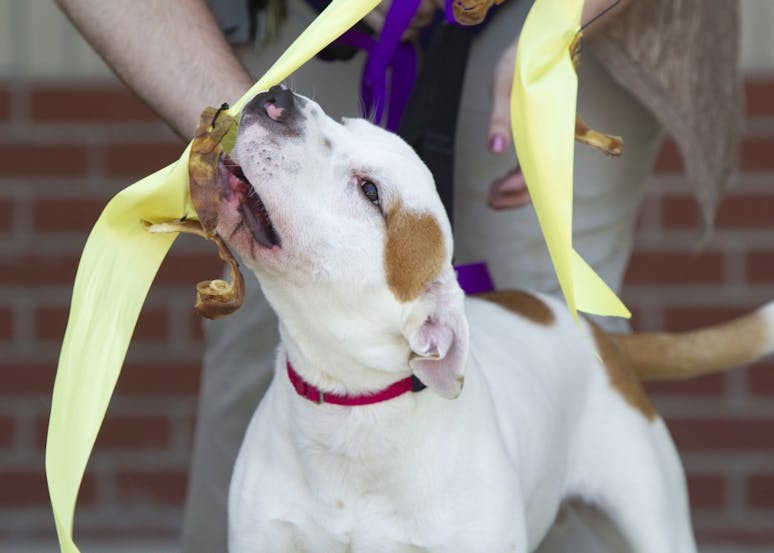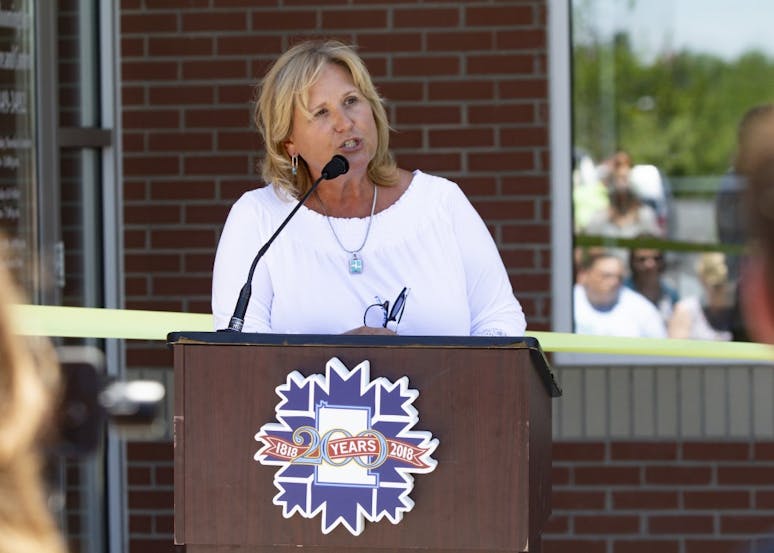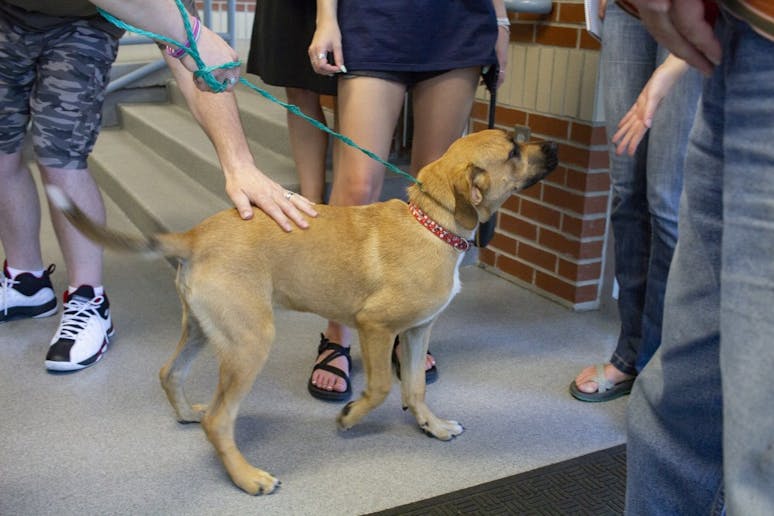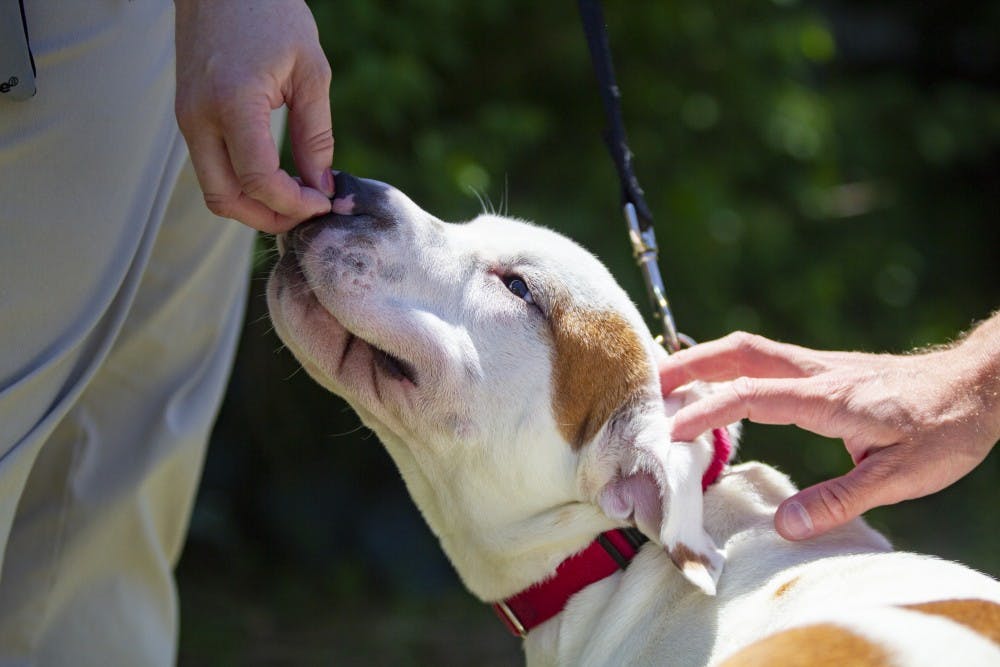More than 60 Bloomington residents, city employees and community members came out to the Bloomington Animal Shelter Tuesday afternoon in the midst of 80-degree weather. Even Mayor John Hamilton came by to provide some remarks at the opening of the newly renovated shelter.
But the real star of the show was an energetic one-year-old dog by the name of Spike. A Shar Pei and Pitbull mix, Spike was led out of the shelter and held to the side as Hamilton, shelter advocate Valerie Pena and Rebecca Warren from the Monroe County Humane Association gave statements about the $2.1 million renovation project that had vastly changed the Bloomington animal shelter.
Finally, at a signal from Virgil Sauder, the animal shelter director, Spike was led to a yellow ribbon with rawhide bow-tied in the middle.
While initially distracted, Spike was able to lick and snack on the rawhide and tear the ribbon down with some help from the humans.

"We Bloomingtonians carry within us a genuine love for our animal companions, and we act on that love," Hamilton said.
Shelter Volunteer Program Director Jenny Gibson, along with other volunteers, took visitors on a tour of the new facility and highlighted the increased ventilation, which would help cut down on animal disease. There is also larger more comfortable housing for the animals and additional workspace for employees.
All of these additional features are meant to both increase the health and well-being of the animals in residence, and also cut down on the euthanasia rate for animals there.
Each year, anywhere from 3,700 to 4,000 animals enter the animal shelter and, so far in 2018, the shelter has a euthanasia rate of only four percent. Most of these cases were necessary because of severe health issues or behavioral problems. Fifteen years ago, the rate was as high as 80 percent, Pena, a 17-year advocate for the shelter, told the crowd.
Murmurs and signs of shock at the change were audible.

Pena recalled her first visit to the shelter years ago, when her dog had disappeared. In those days, it was obvious the shelter was in trouble and was overcrowded, she said.
"There was a dog in every cage, on the floor, in the corners, everywhere there was," Pena said.
After a month of being unable to find her own dog, she came back to the shelter with the hope to adopt. She realized quickly the dogs from a month ago were already gone. Many of them had not been adopted.
Space was limited, these dogs had mere days to be adopted back then, Pena explained. Many had not managed to find homes.
Instead, they had been killed — euthanized.
With the new $2.1 million renovations and facility improvements, Pena said there is no longer the same worry the dogs and cats from last month will be killed and gone at the next visit.
"This facility truly is the icing on the cake," Pena said.
The newly constructed larger rooms and amenities were hugely important to the 20-some employees and the hundreds of volunteers, Gibson said. The larger kennels and rooms for animals also help reduce stress for animals who might be suffering from trauma or other beahviorial issues.
Sauder said while the staff has been doing its best, the old facility had limited its options and its outreach capabilities. For example, volunteer veterinarians had been examining dogs and cats on the floors because of lack of space.
Now, that is no longer the case. Employees and volunteers can start growing accustomed to the space and providing more after-hours programs, training initiatives and adoption follow-up.
"As we add programs we have the space we can now grow into," Sauder said.
Even as the first groups of people explored the new facility, a young dog named Tundra walked out with her new family, on the way to a new home.





